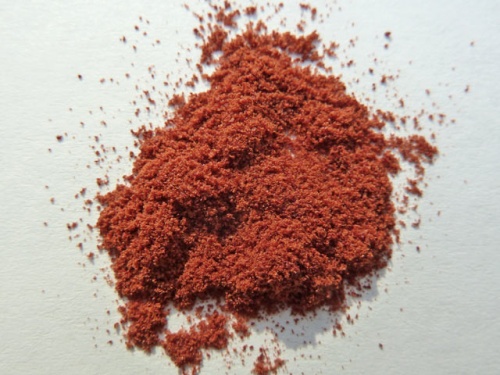Bio leather
Contents
Bio leather - Organic leather
"Bio" does not have a clear definition. It generally describes a "green" ideal of a product that is made in as environmentally-friendly a way as possible, does not harm the consumer and can be disposed of without damaging the environment. An exact ruling on how and when a product can be called "bio", "biological" or "organic" is not available.
Bio-Leather - Tanning methods
Sometimes tanned leathers that are chrome- and metal-free are referred to as bio leather. But this is misleading because chrome-tanned leathers are not a danger to health.
The term bio leather is usually associated with vegetable-tanned leather. This is because "vegetable" sounds ecological and therefore suggests that a product has been manufactured ecologically. However, when comparing chrome tanning with plant-based vegetable tanning, the entire production process should be taken into account and not just the source of the tanning agents.
A scientific investigation concluded that both these tanning methods were more or less identical in terms of resource-conserving and/or resource-sparing. The disadvantages of the chemical content of chrome tanning must be compared with those of vegetable tanning. These are:
- Vegetable tanning agents must be extracted in distant countries (cutting trees, tannin production).
- Delivering the tannins to the tanneries involves long sea voyages and high fuel consumption.
- The consumption weight of plant tannins per tanned skin is significantly higher than with chrome tanning agents.
- The sewage water contamination resulting from the considerably higher number of tanning baths, which the leather has to go through, is much higher in vegetable tanning than with chrome tanning.
Criteria for bio leather
Leather production basically involves the tannery converting a waste product into a durable, natural material. This involves various production stages. Depending on environmental requirements and regulations, tanneries across the world are subject to varying rules. In developed countries, it can be assumed that these rules are much more stringent. But most of world production does not take place in developed countries. It can be assumed that leather production in developed countries will be more beneficial to the environment. Accordingly, leather prices are higher. In any case, fulfilling these requirements is not sufficient for labelling as "bio-leather".
The following aspects play a role in the naming of a leather as "bio leather":
Complete traceability of the animal skin:
- Where was the animal kept throughout its life cycle? Free-range? Barn or cage? Other living conditions?
- What drugs have been administered? Permanent vaccinations and preventative antibiotic care etc.?
- How was the animal fed? Fresh food? Recycled wastes from other food production processes? Pesticide-containing? Genetic manipulation? Sustainable?
- How was the animal slaughtered?
- Types and quantities of chemicals with complete traceability through the production chains (tannins, dyes, binders, pigments, oils and much more).
- For vegetable tanning: Sustainable? Renewable resources? Transport routes? Often bio leather is advertised with "vegetable tanned". This does not mean that vegetable tanning itself was biologically carried out (it can be worked with great environmental damage) and it does not say that the leather could not be contaminated with chromium or with other pollutant chemicals.
- Minimum wages, social standards etc. in the tannery.
- Handling of production waste including re-use.
- Treatment of polluted sewage.
Leather processing:
- Resource conservation, sustainability
- Work safety
- Social standards and remuneration
The sum of the factors to consider is very long and whether any leather deserves the title of "bio-leather" - or not - should only be decided by the customer. The term "bio leather" is not protected and the certificates established by the industry do not always consider all points. The perfect organic leather can also never be mass produced. But there are leather producing companies that pay more attention to the environment than others.
Additional information
- Leather alternatives
- Eco leather
- Vegan leather
- Leather quality
- Vegetable-tanned leather
- Chrome tanned
- Chrome-free leather - FOC = Free of Chrome
- PeTA - People for the Ethical Treatment of Animals
- Ecological leather care - Eco leather care










 a kotori web solution
a kotori web solution